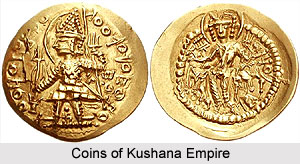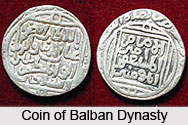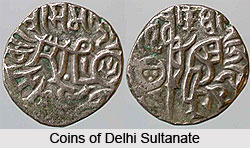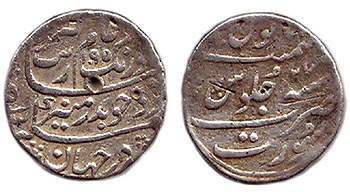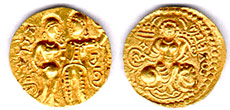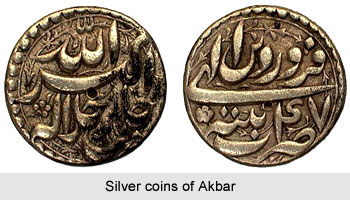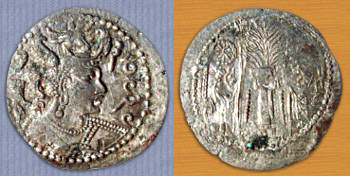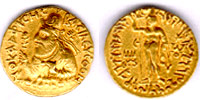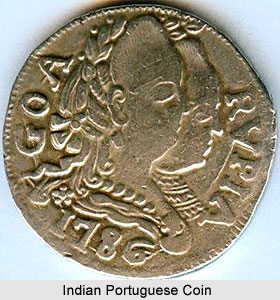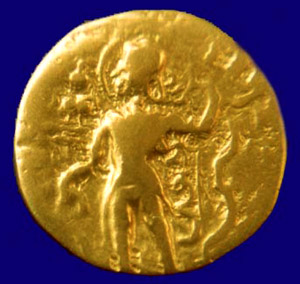 Among the Gupta coins, the coins of Chandra Gupta II are more original and beautiful. These coins indicate that slowly and gradually the foreign influence in Gupta coins was diminishing and they were becoming more Indian. Chandra Gupta II has also the credit of issuing silver coins for the first time.
Among the Gupta coins, the coins of Chandra Gupta II are more original and beautiful. These coins indicate that slowly and gradually the foreign influence in Gupta coins was diminishing and they were becoming more Indian. Chandra Gupta II has also the credit of issuing silver coins for the first time.
There are various types of coins that are found in the era of Chandra Gupta II and the types can be mentioned as follows.
• Archer-type: In this type of coins, on the obverse of the coin, king is represented with a bow in left and arrow in his right hand. There is also a Garud-dhvaja near him while under the left hand of the king the word `chandra` is written. The words `devashri maharajadhiraj shri chandra gupta` is written in a circular form. On the reverse side of the coin a figure of Lakshmi seated on lotus can be found. The title of Candra Gupta `shri vikram` is also written there.
• Couch-type: In these coins the king is seated on a couch with a high back and has a flower of lotus in his right hand, on "he obverse, titles of "deva shri maharajadhiraj shri chandra guptasya" . "param bhagvat maharajadhiraj shri chandra gupta" "rupakrati" etc. Are written on different- coins of this. Type. On the reverse is the figure of goddess laxmi seated on the throne. The titles of "shri vikram" or are also written on the reverse of such type of coins.
• Chhatra type: In this type of coins, the king is depicted as offering sacrifice with a sword in his left hand and on his back a dwarf is standing with a chhatra or umbrella. In the circular form the title `maharajadhiraj shri Chandra Gupta` or `chitimavajitya sucharitai divam jayati vikramaditya` is written. On the reverse side there is the figure of Lakshmi standing taking the lotus in her hand is often visible.
• Lion slayer type: On the observes of such type of coins, the king is depicted as killing the lion. In different coins the title of `Narendra pratithadivam jayatya jaivo bhuvi singh-vikrama` or `deva sri maharajadhiraj Chandra Gupta` is written. On the reverse side there is a figure of Lakshmi seated on a lion. On the reverse side of the coins the title of `Shri singh vikram` or `Singh Chandra` is written. Many scholars are of the view that this type of the coins were issued by Chandra Gupta II to celebrate his conquest of Kathiawar
• Horseman type: In this type the king is depicted as seated on a horse and on all the four sides of him `Parama-bhagwata maharajadhiraja sri chandra gupta" is inscribed. On the reverse of the coin there is a figure of laxmi seated on a throne and the title "ajita-vikram" is also written on this side.
• Chakra vikram type: The obverse of the coin depicts lord Vishnu with a club in his left hand. The king is standing before lord Vishnu. The specialty of this type of coin is that nothing is written on its obverse. On the reverse side there is the figure of Laxmi having a lotus in her left hand and couch-shell in her right hand. Chandra gupta`s title `Chakra vikram` is also written on this side of the coin.
Silver coins: Chandra Gupta II was the first Indian king who issued silver coins. The influence of Saka coinage is clearly visible in these coins. Half of the body of the king has been represented on the obverse of the coin and the date in Gupta era is also written. On the reverse side there is a figure of Garuda. Some coins bear the title of `param bhagavata maharajadhiraj sri chandra gupta vikiamaditya` while others bear the title of `Sri Gupta kulasya maharajadhiraja sri chandra gupta vikramansya`
Though these coins were issued under the influence of the Saka coinage yet a salvish imitation was not made. Efforts were made to indianize the coins.
Copper coins: The copper coins are just similar to the similar coins. The difference between the two is that in the copper coins along with the figure of garuda on the obverse `maharaja Chandra Gupta` or `Chandra Gupta` or `Sri Chandra Gupta` or `Gupta` is written and on the reverse side `sri Vikrarna` or `Chandra` is written. Some coins have been found in which the figure of garuda is not there.
